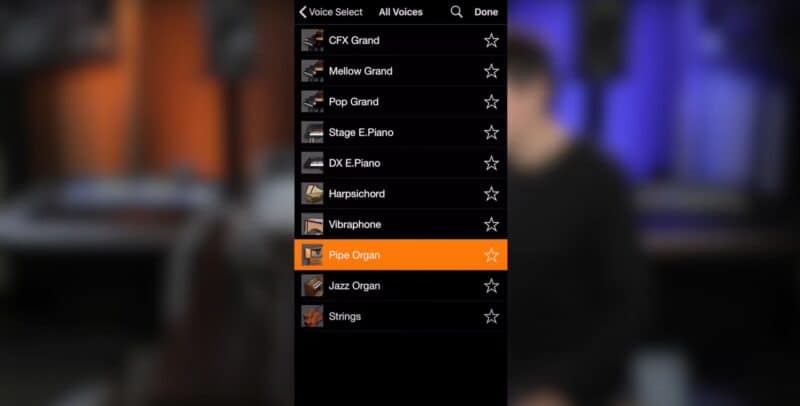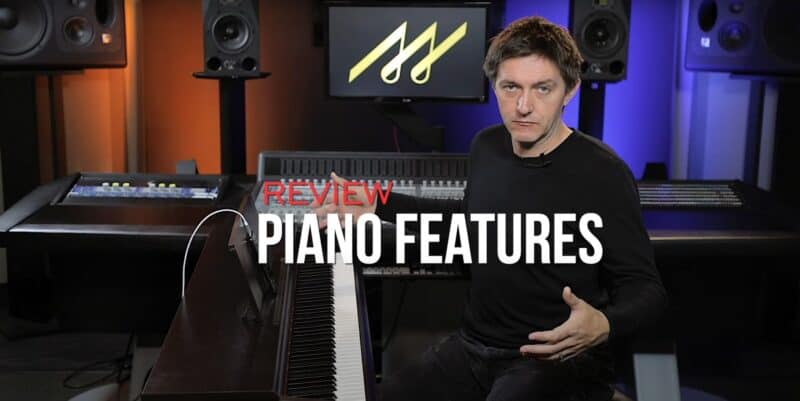Today, we’re reviewing one of the most popular home digital pianos on the market as we look at Yamaha Arius YDP-144. This is an extremely popular and affordable digital piano – it’s not an overstatement to say that there are many thousands of these units across the world in people’s homes, teaching studios and music schools.
Let’s get into our Yamaha YDP-144 review.
Yamaha YDP-144 – Opening Thoughts
The Yamaha Arius home piano series has been immensely popular for years now. The YDP-144b is the second model in the lineup of console pianos, with the more basic YDP-103 serving as the entry point. It’s of course an 88-key digital piano, as all of the Arius models are.
But when it comes to popularity, nothing even comes close to the YDP-144 as it occupies that sweet spot in the mid-range where the price isn’t too high, but you’re still able to get a quality instrument that represents a meaningful upgrade for the aspiring pianist from entry-level models like the YDP-103.
The YDP-144 competes head-to-head with instruments such as the Kawai KDP75 and KDP120, the Roland RP102 and the Casio PX-870.
The YDP-144 is the most popular of the bunch, but we’re going to try and determine if that’s truly deserved, or the result of some savvy marketing and brand recognition. Let’s start by checking out the sound engine.
Yamaha CFX Concert Grand Piano Sound

The YDP-144 is using the Yamaha CFX sample for the main acoustic piano sound. This is a very high-quality recording of the CFX Concert Grand piano, and as such, is a very high-quality sound engine.
The sound is complex, with a very lovely singing quality as well. The tonal profile is very stable and uniform, which some folks will love, though others will prefer a tone that is more varied depending on the volume level and dynamic and output
Anybody who’s been lucky enough to play a real concert grand CFX knows that that is certainly a finely crafted instrument, so it’s great to see how well Yamaha has recreated the concert grand sound here.
In terms of the stereo speaker system, the YDP-144 has a pair of 8-watt speakers. That’s more or less enough power for somebody playing in a relatively small room just for personal use, though it’s interesting to note that both the Kawai KDP-120 and Casio PX-870 have a lot more power with 40-watt speaker systems.
It comes with 192 notes of polyphony which is plenty for personal playing. And even if you’re going to layer up one or two tracks of playback from a recording or MIDI track, there’s no issue with 192 notes of polyphony.
Another cool sound-related feature we need to mention is the “Piano Room,”. There are two different samples that you can choose from, the “CFX Grand,” or the “Pop Grand,” which is probably a C7.
For each one of those samples, you can apply a different kind of environmental effect, which is really just a reverb. There’s “Concert Hall”, “Chamber” and “Club”, each with its own distinct reverb algorithm.
You’ve also got a number of other options to customize the piano experience as well via the Smart Pianist App, which is great. You can edit things like Damper Resonance, individual key settings, touch curve, volume and tuning for each individual key, which is actually a fairly advanced feature for an instrument like this.
There’s also an auto EQ effect, referred to as Intelligent Acoustic Control, which automatically activates, as well as the Stereophonic Optimizer.
Going through the rest of the sounds, we also start to see some really nice stuff, the electric pianos particularly. There’s also Harpsichord, Vibraphone and Pipe Organ, with 10 total sounds.
Overall, the sound is producing a really authentic playing experience, even if the speakers are somewhat underpowered.
Graded Hammer Standard Piano Action

The YDP-144 features Yamaha’s GHS hammer action, which is short for Graded Hammer Standard. If people have watched or read some of our other reviews, you’ll know that we think the GHS keyboard action has some notable weaknesses, but that we still think it’s a serviceable action.
Since this is the case, it’s one of those actions that’s probably best to just play yourself in person so you can make those determinations on a personal level. Piano touch preference can be quite subjective.
Let’s start with the positives: it’s physically very solid with little give to it, so for a lot of intricate styles of playing, it works quite well.
We also happen to really like the feel of the keybed. It’s not super hard nor is it super soft and instead sits right in the middle of how Kawai and Roland’s actions feel, with Kawai’s having a softer keybed and Roland having a harder one.
Now to some of the drawbacks. For one, the GHS is still using a dual sensor, whereas most of the options in the class have now incorporated triple sensors for more accurate dynamic output and better touch sensitivity.
There’s also no texture on the top of the white key and instead just a polished white key surface. As a result, over time, we’ve found that moisture builds up which ends up pulling the pads back from your fingernails. Fortunately, matte black key tops prevent this from happening on the black keys.
For beginners, hobbyists and people who are more finesse players or earlier classical players, getting into pop or Chopin will probably like this action. For people who kind of attack the keyboard with a bit more of a heavy feel with their finger technique, this is gonna maybe feel a bit too stiff, and you may actually wind up wearing the action out a bit earlier than you were hoping.
Features/Connectivity

The 144 comes with its own matching cabinet which is very nicely built, making it an attractive instrument from an aesthetic perspective. Also included is a triple pedal with a sustain pedal (capable of half pedaling), sostenuto and soft.
It comes in both a default Rosewood finish, as well as a Black Walnut.
In terms of connectivity, we’ve got a USB port, and two headphone jacks but no discrete quarter-inch audio out., so you will have to use one of the headphone jacks if you need more power.
Features include a 2-track song recorder, metronome, built-in music books and things like Transpose, Tuning, Layer and Duo mode.
Closing Thoughts
You can’t go wrong with the YDP-144. It’s a well-built, solid instrument that’s going to be pretty satisfying to most people.
While we think there are several other options in the category delivering better value, the YDP-144 is still going to get the job done, and of course, the Yamaha name certainly provides a great measure of comfort, regardless of specific product.

